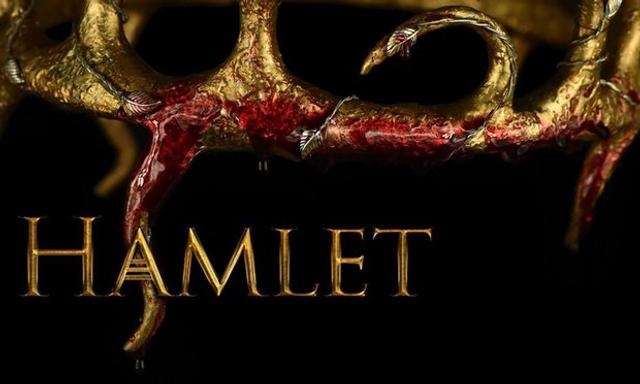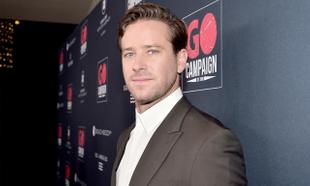The story of Hamlet is no doubt one you have come across if not once than multiple times, having been brought to the big screen by the likes of Kenneth Branagh, Laurence Olivier, Richard Burton, David Tennant and, more recently, Benedict Cumberbatch. It’s been parodied by Arnold Schwarzenegger and The Simpsons, and even provided the plot for one of Disney’s most beloved animations, The Lion King.
One of the greatest challenges, then, in portraying the tragedy of The Prince of Denmark is to give this four hundred year old story a new and invigorating take. While the Icarus Theatre Collective and Kings Theatre production of Hamlet, showing this week in the Bord Gáis Energy Theatre, is by no means flawless, it is refreshingly different.
The stage that provides the setting for the play’s running is a simple yet effective design. It comprises of two thrones, some pillars, a number of steps, and Danish flags draped in the background. The stage direction impressively utilises this backdrop, which is brought to life by the nine person ensemble which provides the main characters as well as the royal guards and chorus. The direction keeps things visually interesting, as challenging as the play can be to follow, this not being only because of the old English dialogue but also because the actors are legging it through the first act of the play, presumably to get to the good stuff.

The play has been cut down to a very reasonable running length of two and a half hours and aside from the adapted script, which includes shorter monologues, the exclusion of less necessary scenes, and a few repetitions of the iconic ‘To Be or Not To Be’ passage, the main change made to the play in this production of Hamlet is the number of gender change-ups. Horatio (played by Camille Marmié) is now a woman, as is Rosencratz (Virginia V. Hartmann), and the guards/chorus have a fair near-equal proportion of men to women.
The revision of gender in the play has mixed results. The women, for example, are now represented as just as prepared for battle as the men are. No uncomfortable, impractical dresses here – under the female characters’ flowy skirts, they wear trousers and boots and, most significantly, they are armed. While this gives characters like Ophelia (played here by Kerry Gooderson) an effective empowerment, the bond between the feminised Horatio and Nicholas Limm’s Hamlet is not all that convincing. The play feels the loss of this pivotal male comradeship.
Another interesting change in the new play is the use of the chorus. They alternately repeat lines of the core characters, recite the characters’ lines instead, or indeed feed the characters their own lines. As a result, they function as kinds of streams of conscience that give added meaning and texture to the play without causing a grave disruption.

But onto what is an essential element – how convincing is Hamlet himself? Nicholas Limm, who is young but given authority by his height, speaks the lines with purpose and eloquence, reminding us with every syllable of the genius of Shakespeare’s words. His voice is deep and regal yet also elegantly connotes the distress (and as the play progresses, the increasing hysteria and mental disintegration) of his character. He lets his voice do the majority of the acting for him, and for the first half of the play, Limm gives a refreshingly reserved performance that stands out from the theatricality of those around him. After seeing his father’s ghost – Will Harrison-Wallace impressively matches Limm’s vocal style to accentuate the father-son bond – he portrays the character in a hyper yet nuanced way that is loyal to the literary icon.
The latter part of the play is also effective in that where many theatrical productions falter in their second half, the narrative now is conveyed at a heart-racing pace and the stylistic aesthetics of the former half are essentially abandoned with the emphasis instead given to development of the story and its characters. It is in this half where Gooderson as Ophelia, Portia Booroff as Gertrude, and Andrew Venning as Laertes are really given the opportunity to shine, and the final, conflict-ridden scene brings the weighty play to a satisfactory conclusion.















































































